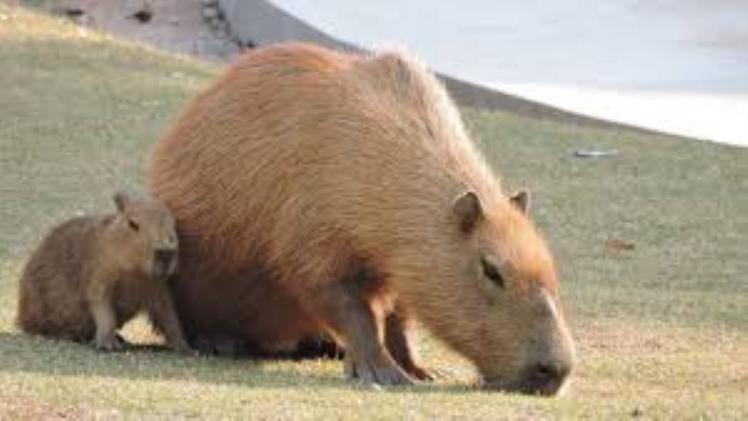What Do Geese Eat? A Comprehensive Guide
Geese are fascinating creatures known for their social behavior, impressive migratory patterns, and adaptability to various environments. A critical aspect of their survival and well-being is their diet, which plays a vital role in their growth, health, and migration. Understanding what geese eat not only sheds light on their behavior but also helps bird enthusiasts and wildlife caretakers provide appropriate food for these birds.
The Natural Diet of Geese
Geese are primarily herbivorous, with their diet consisting largely of plant material. However, they are opportunistic feeders and can adapt to available food sources. Here is a breakdown of what geese typically eat in the wild:

1. Grasses
Grasses form the bulk of a goose’s diet. They have strong beaks designed to clip and tear grass efficiently. Common types of grass they consume include:
- Bluegrass
- Bermuda grass
- Ryegrass
- Clover
Geese prefer young, tender shoots as they are easier to digest and rich in nutrients.
2. Aquatic Plants
As waterfowl, geese often forage in and around water bodies. Aquatic vegetation, such as pondweed, duckweed, and water lilies, provides essential nutrients. These plants are an important part of their diet, especially during the warmer months when they spend considerable time in wetland habitats.
3. Seeds and Grains
Geese naturally forage for seeds and grains found in the wild. These include:
- Wheat
- Barley
- Oats
- Corn
These high-energy foods are particularly important during migration when geese require extra calories to sustain long flights.
4. Fruits and Berries
While not a major part of their diet, geese occasionally eat fruits and berries, especially during autumn. They may consume:
- Wild berries
- Grapes
- Apples (fallen and sliced)
Fruits provide a quick source of sugar and energy.
5. Insects and Small Invertebrates
Although geese are primarily herbivorous, they may consume small amounts of insects, snails, and other invertebrates, particularly when plant-based food is scarce. This is more common among goslings (young geese) as they require protein for growth.
Seasonal Variations in Diet
Geese’s diets change with the seasons, influenced by food availability and their nutritional needs:
- Spring: Geese feed on fresh grass shoots and early aquatic plants. This period is critical for replenishing energy after migration and preparing for the breeding season.
- Summer: Their diet includes grasses, grains, and aquatic plants, as these are abundant in their habitats.
- Autumn: Geese consume more seeds, grains, and berries to build fat reserves for migration. Fallen crops from agricultural fields often become a primary food source.
- Winter: When natural food sources are scarce, geese rely on stored fat reserves and may forage in fields for leftover grains.
Feeding Habits of Domestic and Captive Geese
Domestic and captive geese have slightly different diets compared to their wild counterparts. Owners need to ensure their geese receive balanced nutrition for optimal health and egg production.
1. Commercial Feed
Pelleted feed designed for waterfowl is a staple in the diet of domestic geese. These feeds are formulated to provide essential nutrients, including protein, vitamins, and minerals.
2. Fresh Greens
Domestic geese should have access to fresh greens such as lettuce, spinach, kale, and dandelion leaves. These replicate their natural foraging habits and provide necessary fiber.
3. Grains
Supplementing their diet with grains like corn, oats, and wheat ensures they receive enough carbohydrates, especially during colder months or when laying eggs.
4. Fruits and Vegetables
Safe fruits and vegetables like apples (without seeds), carrots, and peas can be added to their diet. However, these should be offered in moderation to prevent overconsumption of sugar.
Foods to Avoid
While geese are resilient birds, certain foods can be harmful or toxic to them. These include:
- Bread: Although commonly fed by humans, bread provides little nutritional value and can lead to malnutrition and digestive issues.
- Avocado: Contains persin, which is toxic to birds.
- Chocolate and Caffeine: Both are highly toxic to geese and other birds.
- Processed Foods: Salty, sugary, or fatty human foods are not suitable for geese.
- Raw Beans: Contain phytohaemagglutinin, a toxin harmful to birds.
Feeding Wild Geese Responsibly
Feeding wild geese can be a rewarding experience, but it’s important to do so responsibly to avoid harming the birds or disrupting their natural behaviors. Here are some tips:
- Offer Nutritious Foods: Instead of bread, provide cracked corn, birdseed, or chopped greens.
- Feed in Moderation: Overfeeding can lead to dependency and overcrowding.
- Avoid Feeding in Sensitive Areas: Feeding geese in areas where their presence might damage ecosystems or create safety hazards (like busy parks) should be avoided.
- Respect Their Space: Geese can become aggressive if they feel threatened, so maintain a safe distance.
Nutritional Needs and Health
Geese require a diet rich in carbohydrates, fiber, and vitamins to maintain their health. Insufficient or imbalanced nutrition can lead to issues such as:
- Angel Wing: A condition caused by an excessive intake of protein and carbohydrates, leading to deformed wings.
- Malnutrition: Caused by diets lacking in essential nutrients.
- Digestive Problems: Can result from consuming harmful or inappropriate foods.
Conclusion
Geese are adaptable and opportunistic feeders whose diets vary based on their environment and the season. In the wild, they thrive on grasses, aquatic plants, grains, and occasional fruits or insects. Domestic geese benefit from a balanced diet of commercial feed, fresh greens, and grains. Whether observing geese in the wild or caring for them in captivity, understanding their dietary needs is essential for supporting their health and well-being. By respecting their natural habits and offering appropriate foods, we can contribute to the survival and happiness of these remarkable birds.








